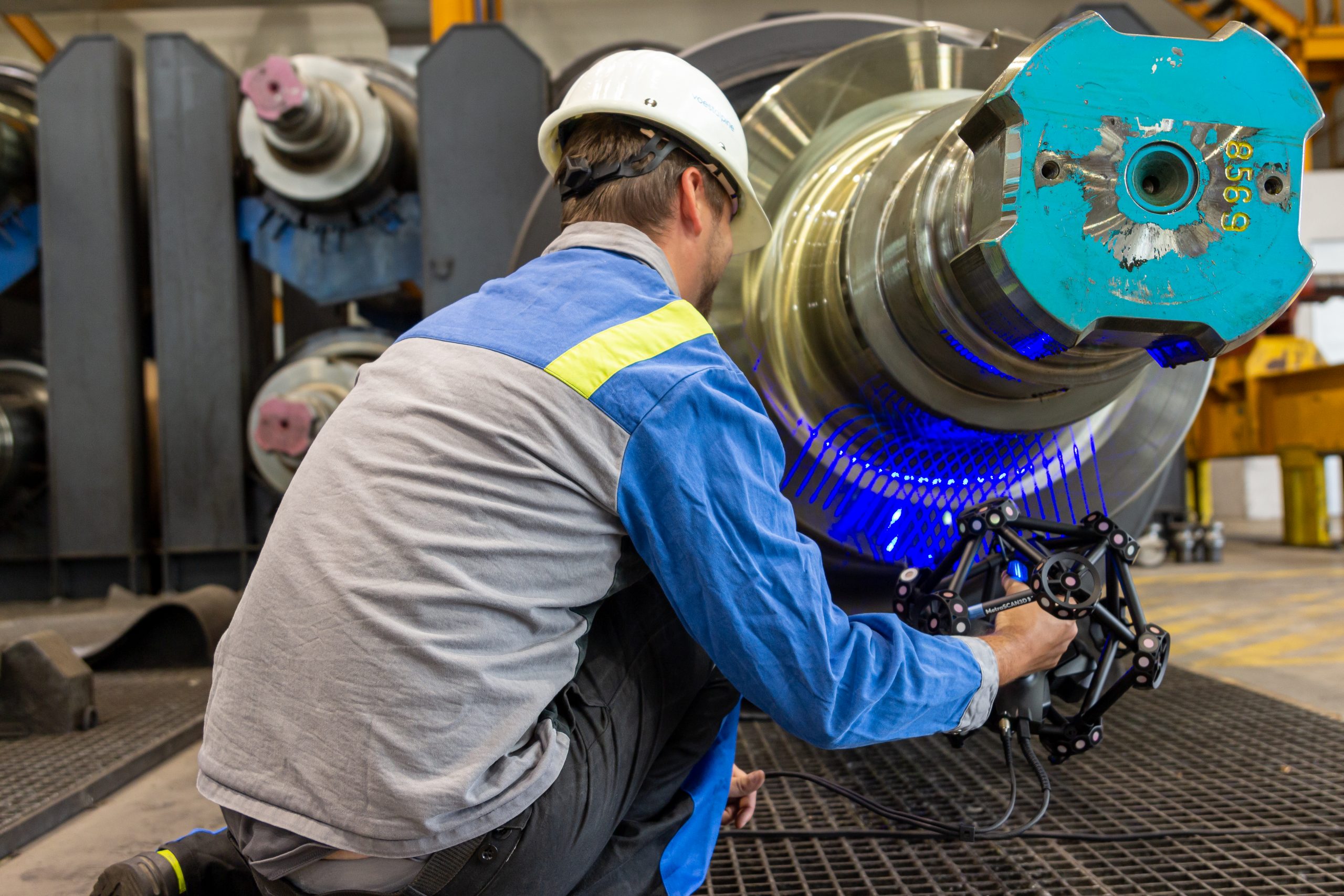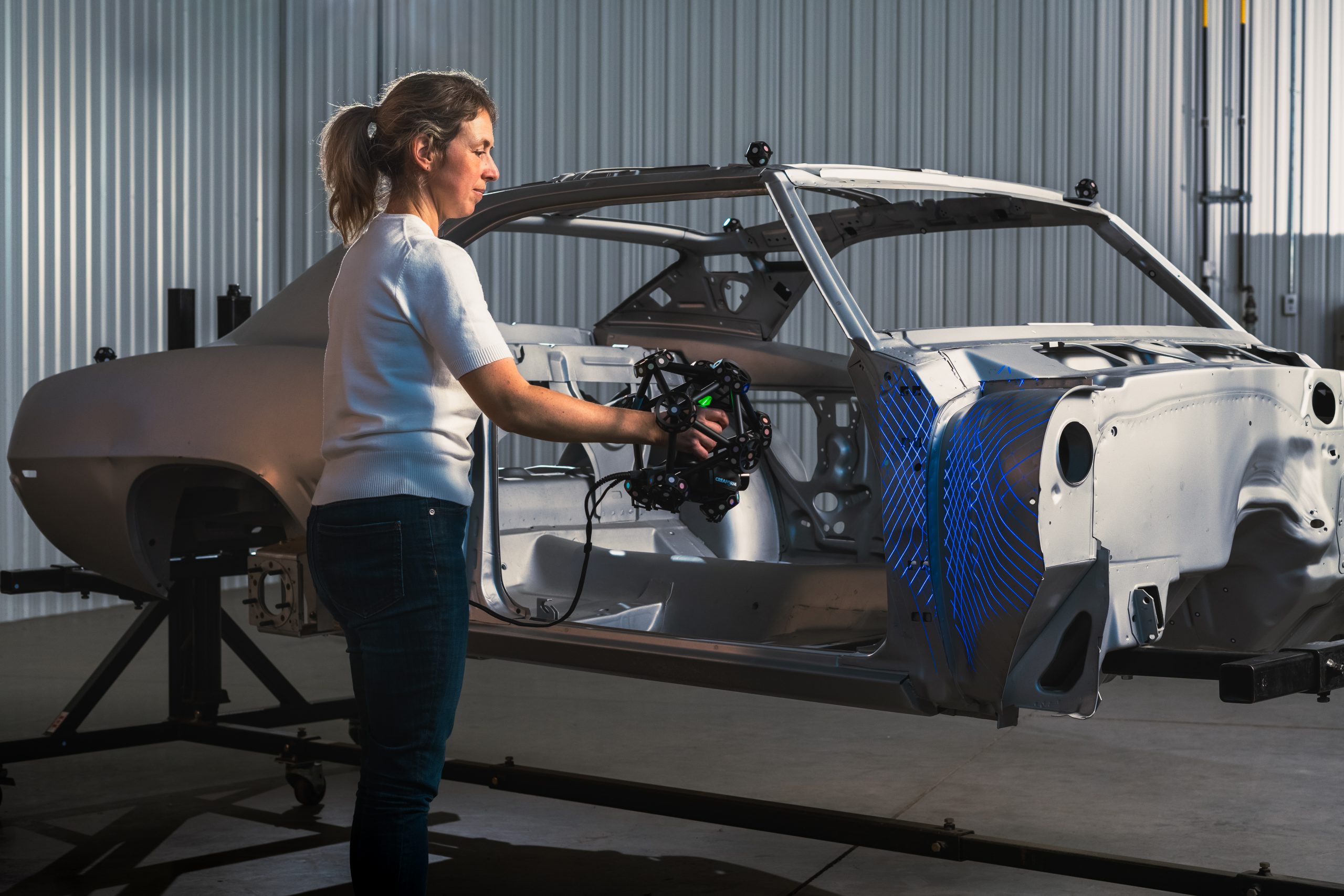November 4, 2024
Improving Construction Processes with 3D Metrology See the articleDo you ever question the accuracy and reliability of your quality control (QC) process? Do you ever doubt the quality of your measurement setup, especially if you are a non-expert in 3D scanning? Have you ever measured large parts that required moving the equipment to expand the measuring volume and questioned if there was a cumulative error that could distort the results?
Knowing that decisions can be misguided without a reliable QC process and lead to costly errors, it is crucial to ensure that your measurements are as accurate as possible. If you are unsure about your current QC process, this blog can offer innovative solutions.
Unreliable QC Process
Doubt can impair decision-making that will directly impact product quality. Accepting parts that do not meet requirements while rejecting parts that comply with standards are costly errors that ultimately undermine customer satisfaction and company revenue. Therefore, companies must and understand where this doubt in measurement accuracy and reliability stems from.
Origin of Doubt, Sources of Bad Decisions
Various factors can influence measurement accuracy and reliability in QC processes, leading to bad decision-making. Simply put, errors may arise in QC processes due to three main factors: the measuring equipment, the user conducting the measurements, and the environment or measuring methods around and between the equipment and the user.
Measuring Equipment
Equipment certified according to relevant standards, such as ISO, has been thoroughly tested and qualified to meet specific performance criteria. This ensures its capability to produce accurate, repeatable, and reliable measurements. On the other hand, equipment that has not undergone rigorous testing and meticulous qualification may perform poorly or function inadequately, regardless of who uses it. Opting for high-quality equipment engineered by renowned manufacturers typically results in greater accuracy, more reliable measurements, and software features that minimize user error, compared to lower-quality alternatives.
User
Human error is regularly cited as a primary source of error in various processes, including measurement and quality control, despite advances in automation. This is often due to a lack of technical expertise, which has been a significant challenge in recent years. As a result, users without the requisite technical background may not use the equipment correctly, leading to measurement errors and affecting the data quality. This misuse can be caused by a lack of guidance on how to operate the equipment or by not performing the correct setup, which is necessary to ensure accurate measurements.
Environment and Measuring Methods
Equipment performance can also vary depending on the environment and measuring methods used. For instance, quality control of large parts cannot always be carried out in a metrology lab. Inspection must often be conducted directly in the production environment, where vibrations and thermal variations can impact validation jigs, resulting in inaccurate and non-repeatable measurements. Additionally, when dealing with large parts, leapfrogs are often required and can introduce an additional, unspecified error that further contributes to measurement inaccuracy.
Therefore, to reject the bad parts and keep only the good ones, QC specialists and metrologists must take all necessary measures to minimize and, ideally, eliminate any uncertainty from all sources. This is an essential step for maximizing overall confidence in the QC process and creating an ideal environment for making confident and informed decisions.
Eliminate Errors in your QC Process
Creaform is introducing three new improvements to the MetraSCAN BLACK+TM to help eliminate errors in your QC process. The new acceptance tests based on ISO 10360 provides better confidence in the measurement equipment, ensuring accurate measurement results. Adding new specifications and easy-to-use 360 magnetic targets further enhances measurement accuracy, especially for large parts that require leapfrogging. Finally, the latest guidance tools make it easier for non-experts to use the measurement tool efficiently and correctly.
1. New Acceptance Tests Based on ISO 10360
What is more important than trusting the accuracy specified on a manufacturer’s specification sheet? The best way to generate this trust is to rely on international standards, such as ISO, which has an impeccable reputation in the industry and a proven track record in QC processes. This is why the performance of the MetraSCAN BLACK+ is now also validated based on ISO 10360, in addition to being certified according to the German standard VDI/VDE 2634 part 3.
Moreover, Creaform’s acceptance test and performance assessment now include two new specifications: the form error on a sphere and the form error on a flat surface.
Concretely, this indicates that our 3D scanners must undergo a more rigorous process and succeed in more performance tests before being shipped to customers, resulting in better-quality products without exceptions. By being fully transparent about our qualification and certification acceptance tests, customers can be confident in the product performance and Creaform’s stated accuracy.
2. QC on Large Parts Simplified with Automatic Volume Extension and 360 Magnetic Targets
Inspecting large parts often requires extending the reach of the measuring device. A measuring arm may have physical limitations that necessitate leapfrogging to expand its volume. Even with equipment having deep measuring volume, line-of-sight issues can occur when measuring hidden areas (like the back of a car), leaving no option but to move the device to have a more direct field of view.
Proceeding with leapfrogs has two significant drawbacks in QC processes. The more leapfrogs there are, the more the volumetric accuracy deteriorates, and the longer it takes to complete the QC process, especially with measuring arms that must be repositioned at each step. The problem is that most measuring equipment manufacturers do not specify the impact of leapfrogging in their specifications, leaving users in doubt about the measurement accuracy.
Creaform introduces more updates to its MetraSCAN BLACK+. The Automatic Volume Extension (AVE) feature has been enhanced and now includes a specification (0.025mm + 0.015mm/m), indicating that a 5-meter part can be measured with an accuracy of 0.100mm. Additionally, new 360 magnetic targets have been added to improve tracking. These enhancements solve the leapfrog issue, allowing users to move the C-Track and perform real-time photogrammetry with greater accuracy and speed.
Automatic Volume Extension (AVE)
The AVE feature allows for automatic acquisition volume extension only by moving the C-Track without requiring extra measurements. Creaform’s advanced integrated photogrammetry and scaling algorithms ensure a more precise, repeatable, and human-error-free measurement of large parts.
360 Magnetic Targets
With their crafty design, the new 360 magnetic targets are automatically detected from any angle by the C-track, making tracking easier and setup quicker. Users, whether they are experts or beginners, can now effectively scan large parts and get accurate and reliable measurements.
See how the QC process is simplified for large parts with the AVE feature and new 360 magnetic targets.
New Setup Assistance Tools
The MetraSCAN BLACK+ now comes equipped with setup assistance tools designed to help new or inexperienced users get up to speed quickly and feel confident using the device, even without extensive prior knowledge.
Using live visual feedback, the software helps the user position the targets in the right number and places.
The guidance volume display simplifies the setup process and allows users to make swift adjustments. The assistance tools also provide users with advanced setup diagnostics, which help them troubleshoot and validate their setup before starting a new acquisition. Using a target deviation table and vectors, they can determine if there were any deviations since the targets were positioned. This lets them conclude whether the jig has been impacted or thermally deformed.
Check out how the Setup Assistance Tools help users troubleshoot their setups.
In short, the setup assistance tools—with their live feedback on positioning targets and advanced troubleshooting assistance—provide guidance for setup preparation, making it easier for non-experts to use their measuring equipment and to be confident in their QC process.
Make the Right Decisions Based on Accurate, Repeatable, and Reliable Data
With these new improvements to the MetraSCAN BLACK+, Creaform is taking a step further to reduce errors that can occur in the QC process. Now, the performance of the measuring equipment is validated based on ISO 10360 for better accuracy. The user, whether expert or beginner, is better guided during setup execution. Measuring methods requiring leapfrogging are now better documented and easier to perform. Users can also troubleshoot their setups to ensure environmental conditions have not created deviations.
Therefore, if all sources of error are eliminated from the equation and you no longer doubt the equipment, the user, or the environment and measuring methods, then you make the right decision with confidence, knowing that the default can only come from the part that must be reworked or rejected. This is how you can regain confidence in your QC process.
Learn more about the New MetraSCAN BLACK+.











